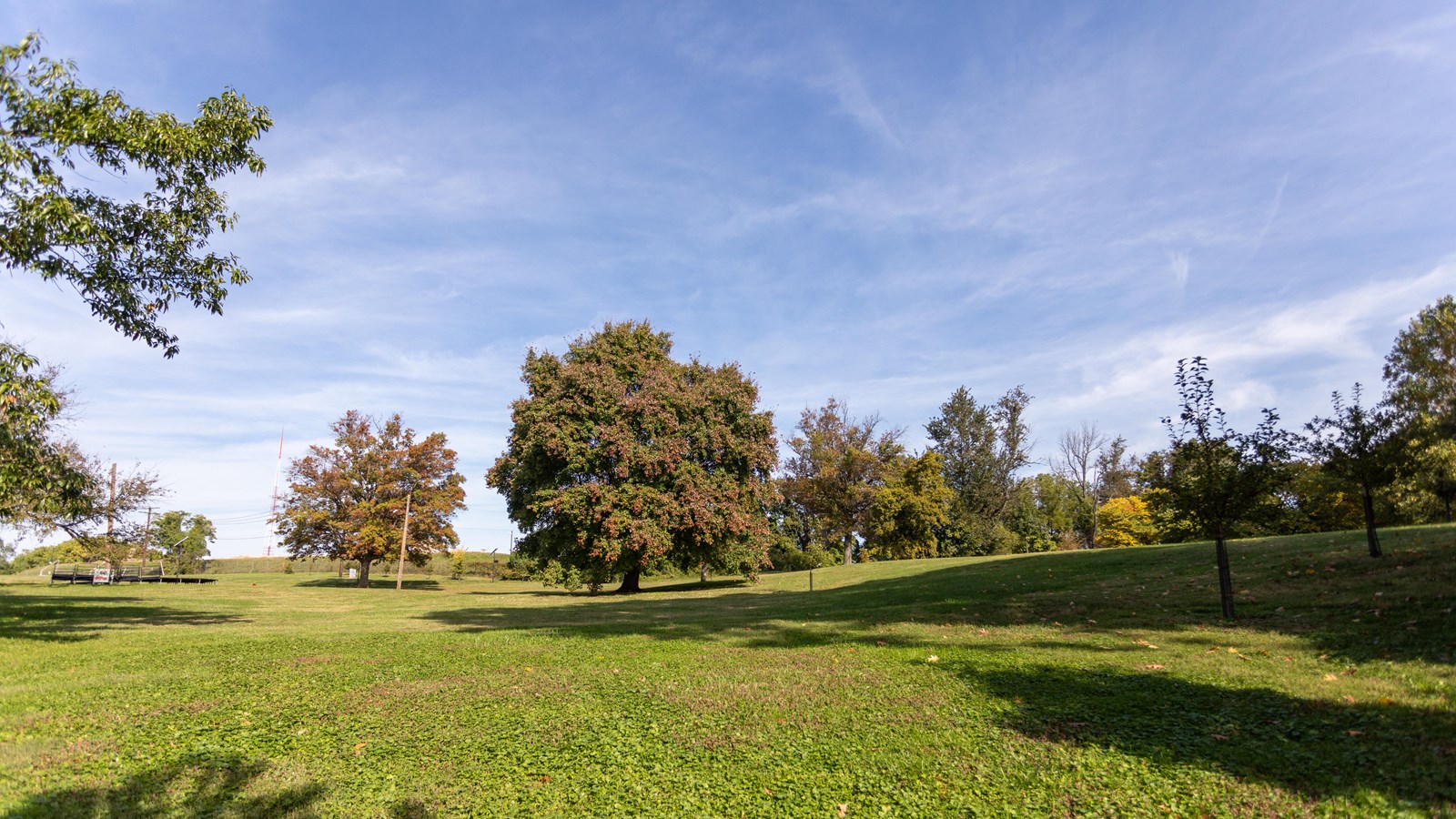Last updated: December 19, 2023
Place
Fort Reno

NPS / Claire Hassler
Historical/Interpretive Information/Exhibits, Public Transit
Fort Reno was originally named Fort Pennsylvania, and was built during the winter of 1861 shortly after the disastrous defeat of the Union Army at the First Battle of Manassas. Brig. Gen. John G. Barnard, Col. of Engineers, U.S. Army, was in charge of construction of the defenses around Washington. Barnard chose the location of Fort Reno for its strategic importance in guarding the Rockville Pike (present day Wisconsin Avenue). Being the highest elevation in the city (429 feet above sea level), Fort Reno also served as a forward outpost and signal station for detecting enemy movement near the northern part of the city.
Constructed by the 119th Pennsylvania Regiment, the fort's name was later changed to Fort Reno in 1863 in memory of Major General Jesse Lee Reno, who was mortally wounded at the Battle of South Mountain, September 14, 1862. Originally rather small, Fort Reno was enlarged and strengthened with an advanced battery 300 yards north from the highest ridge, across from what is now Fessenden Street and along 39th Street. This advanced battery had eight 12-pounder guns and a magazine, a covered walkway connected it to the main fort to the south. A double line of rifle trenches was added to strengthen the position.
Eventually, the fort was the largest and strongest of those defending the capital with a dozen heavy guns, three Parrott siege guns and nine 27-pounder barbette guns. A strength of three thousand men of the First Brigade made Fort Reno the stronghold of the northern defenses of the capital.
In July 1864, due to Gen. Ulysses S. Grant's insistence that troops be moved from the defenses to reinforce his army at Petersburg, Fort Reno was under-manned, as were all of the defenses around the city. Hearing from spies that the capital was poorly defended, Confederate Gen. Robert E. Lee sent Gen. Jubal A. Early to attack from the north. Around noon Monday, July 11, 1864 (before the Battle of Fort Stevens), Fort Reno was the first of the defenses to view Early's advance near Rockville, Maryland. The lookouts from the signal tower at Fort Reno saw clouds of dust, and then Confederate army wagons moving toward the city.
During Early's assault of Fort Stevens on July 11th and 12th, 1864, the heavy guns of Fort Reno lent little support value, as there was a fear the long range guns would hit the Union Army's advanced pickets. One of the shells that was fired from Fort Reno by a 100-pounder Parrott Rifle traveled 3.5 miles north of the fort, killing four Confederates where the present day Bethesda Naval Hospital is located in Bethesda, Maryland. Due to Fort Stevens being reinforced on July 12, 1864, it was never taken by the Confederate army, nor was the capital city ever reached.
During the fighting of July 10-12, 1864, small squadrons of soldiers from Forts Reno and Stevens had advanced into the countryside north of the city to fend off the invaders. A few Confederates were taken prisoner and brought back to camps where they were held until transfer to a central prison. Early's army retreated back across the Potomac River near Leesburg, Virginia, and Washington breathed a sigh of relief.
After the close of the war, the forts (Reno included) were slowly dismantled and abandoned. Most of Fort Reno could be seen as late as 1892, but the fort and battery at the north end were eventually graded down for the construction of a water reservoir. Today the site is bounded by Nebraska Avenue, Fessenden Street, Belt Road, and Chesapeake Street, NW.
- Duration:
- 2 minutes, 5 seconds
An overview of the Civil War Defenses of Washington, the roles of Fort Stevens and other forts in the Civil War, and how park visitors can experience these places today.
